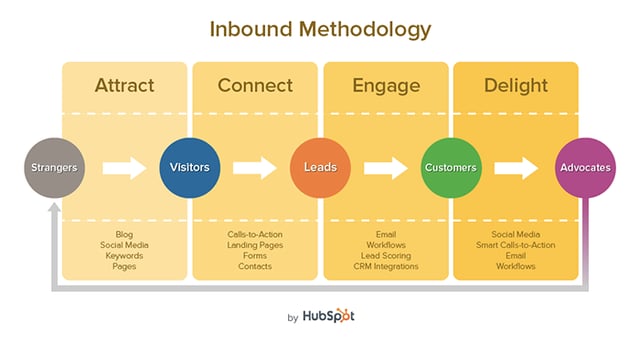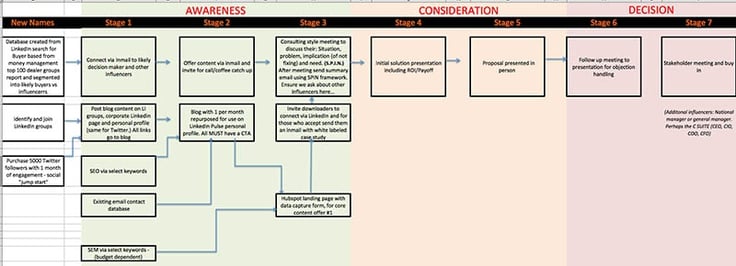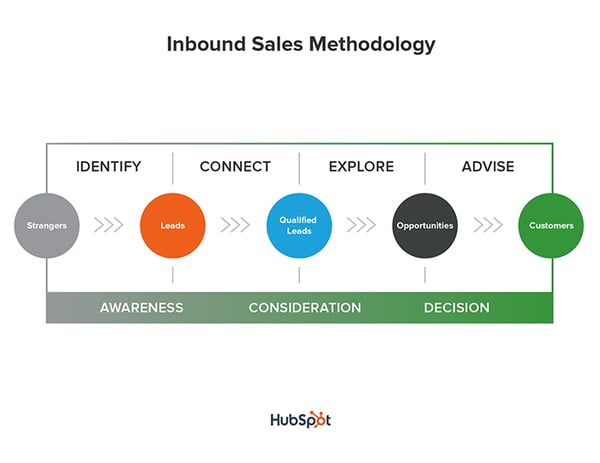Get WISER with Your AI Prompts - A guide for sales managers
Everyone’s wittering on about AI like it’s the second coming. But here’s the rub: if you give it half-baked prompts, you’ll get half-baked answers....
4 min read
Nicole Turner 24/08/2016 10:12:22 AM

According to CSO Insights, organisations with dynamic, adaptable and aligned marketing and sales strategies reported an average of 10% more sales people making quota to compared to other companies. This statistic is one of many reasons we have been discussing the benefits of ‘Marketing-as-a-Service’ and aligning your marketing and sales functions for past 6 weeks. Last week we talked content, this week it’s tactics and how implementing new B2B marketing strategies can provide your business with smart, profitable, sustainable growth.

After establishing a clear focus on your buyer persona’s and their problems, the consequences to the business of not solving them and developing some clarity on how your buyers actually make purchase decisions, you are now ready to implement new tactics and create a ‘journey map’.
A ‘journey map’ is a simple exercise that can be done by free hand on paper, in an Excel spreadsheet or design software (like Piktochart), that logically lays out the appropriate tactics for each phase of the buyers journey (Attract, Convert, Close, Delight) that you will use to communicate to your buyer.

Using your buyer’s journey as a starting point, think about what you want your buyer to be consuming and the method of communication you think they will be most receptive to. For example, you don’t want to ask your buyer to ‘Book A Demo’ if they are only gathering research about you and your competitors (i.e. the Attract phase). In other words, the tactics and the content have to be stage appropriate.
Below is an example of a simple, yet effective journey map created in Excel.

Your B2B marketing and sales strategies, though developed at the same time, will naturally be different and will be based on the content identified, agreed and designed from your initial marketing and sales strategy planning sessions. The content ultimately aims to guide your buyer along their purchasing journey.
Inbound marketing tactics that attract buyers to you include:
These tactics have rapidly grown in popularity, as they are effective and cheap. Blending inbound with outbound tactics (for those already in your contacts database) is often the optimum approach. Leads that convert on website landing pages hosting high value content pieces are known as ‘active leads’ and when qualified are passed onto sales to approach.
I’m going to demonstrate this concept with an example marketing tactic for a buyer moving through the ‘Attract’ and ‘Convert’ phases.
In the Attract phase, your buyer is starting to do some research about a problem they are facing in their business. They will most likely start off with research in Google or their favourite social media platform.
This is a great time to expose them to your thought-leadership blog on your website. You might be thinking, “How are they going to find my awesome website and blog?” The answer… through highly targeted keywords and long-tail phrases intentionally dispersed throughout your website pages, blog copy and social media posts. Getting these keywords right is essential in showing up in search results and staying in front of your competition. If you’re not sure how to do this, stop here and read this blog on SEO basics.
Once you get people to find your blog, you’ll want to ensure you use language that resonates with the buyer. Within the blog, you’ll want to encourage them to download a gated content piece such as an eBook that clearly demonstrates you understand their challenges and that you have the expertise to solve them. Remember, your eBook contains in-depth, valuable information for the buyer about their problems and demonstrates your capabilities indirectly through your understanding of their challenges. (It should not directly promote your offers!). You can then share and promote your blog through social media and email campaigns.
Hot tip: Don’t sell yourself short at this stage by giving your eBook away for nothing in exchange (i.e. un-gated). Use a landing page with a simple form to collect your buyers contact details and once complete, have an automated email set up that sends the eBook straight to their inbox. Once a contact has filled out a form, they are officially an ‘active lead!’
With all this said, marketing should only be accountable for a portion of your leads. Sales must generate their own share, typically from scratch, and these are referred to as “passive leads”. Together, active and passive leads make up the total number of leads required to hit your revenue goals.
So what are successful sales tactics? They are strategies being developed under a new sales methodology called ‘Inbound Sales’ or you may have heard the alternate phrase 'social selling'. This innovative concept has emerged from the shift from product based selling to value based selling which has rapidly accelerated because of the newly empowered buyer. Sales processes have had to adapt to this brave new buyer centric world.
“If your buyer is changing the way they buy, you must redefine the way you sell”
A new ‘sales journey’ is emerging (Identify, Connect, Explore, Advise) and associated tactics that should be implemented in each phase when converting a stranger to a ‘passive lead’ using Inbound Sales.
Inbound Sales includes use of social media to interact directly with your prospects, answer their questions and provide them with thoughtful, informative content.

In the sales journey, the ‘Identify’ and ‘Connect’ tactics are particularly under the spotlight. Traditional sales tactics such as cold emailing and cold calling are increasingly ineffective and are evolving rapidly to include highly effective “social selling” techniques using such platforms as LinkedIn Sales Navigator and HubSpot’s Sidekick for business.
I hope you’ve found this post valuable and that it’s enabled you to reflect on your current processes to determine if there are areas on which you can improve.
If you are the CEO of a small to medium size business experiencing zero to low business growth and would like to get more information about how you can improve your marketing and sales processes, we encourage you to download our eBook - ‘3 Reasons Why Its time to Redesign Your Sales And Marketing’.
Download the eBook now by clicking the button below:
Alternatively, if you haven’t already, you can check out the previous articles in this series and subscribe to our blog to receive related thought-leadership content straight to your inbox each week.
And remember, if you like this post, be sure to share it!
Subscribe to our latest news and updates on HubSpot.

Everyone’s wittering on about AI like it’s the second coming. But here’s the rub: if you give it half-baked prompts, you’ll get half-baked answers....

The business world is falling head over heels for AI—and who can blame it? With promises to reduce grunt work, uncover insights, and turbocharge...

Search is evolving - fast. For two decades, SEO has revolved around Google’s algorithm: keywords, backlinks, metadata, and page speed. But with the...